- Dialogue with stakeholders
- The CEO succession plan
- Implementation of Corporate Governance Evaluation
- Execution of Various Training Sessions, etc.
Dialogue with stakeholders
In FY2024, we engaged in the following dialogues with the Company’s key stakeholders, namely, patients and the people in the daily living domain, shareholders and institutional investors, and employees. At its meeting held at the end of the fiscal year, the hhc Governance Committee reflected on these dialogues and discussed how to incorporate their results into the oversight function of the Board of Directors.
Dialogue with patients and the people in the daily living domain
- We visited a community-based small-scale multifunctional facility that provides day service (regular visits), at-home care, and short stays all in one. We engaged in conversations and non-verbal communication with users. We also received concrete explanations from those involved in operations and caregiving about the facility's characteristics and daily interactions with users, including patients with dementia. This experience renewed our strong awareness of the Company’s social mission to address Alzheimer’s disease. Through this dialogue, we deepened our understanding of the importance of empathizing with the emotions of patients and the people in the daily living domain, as well as our Corporate Concept of hhc and its implementation.
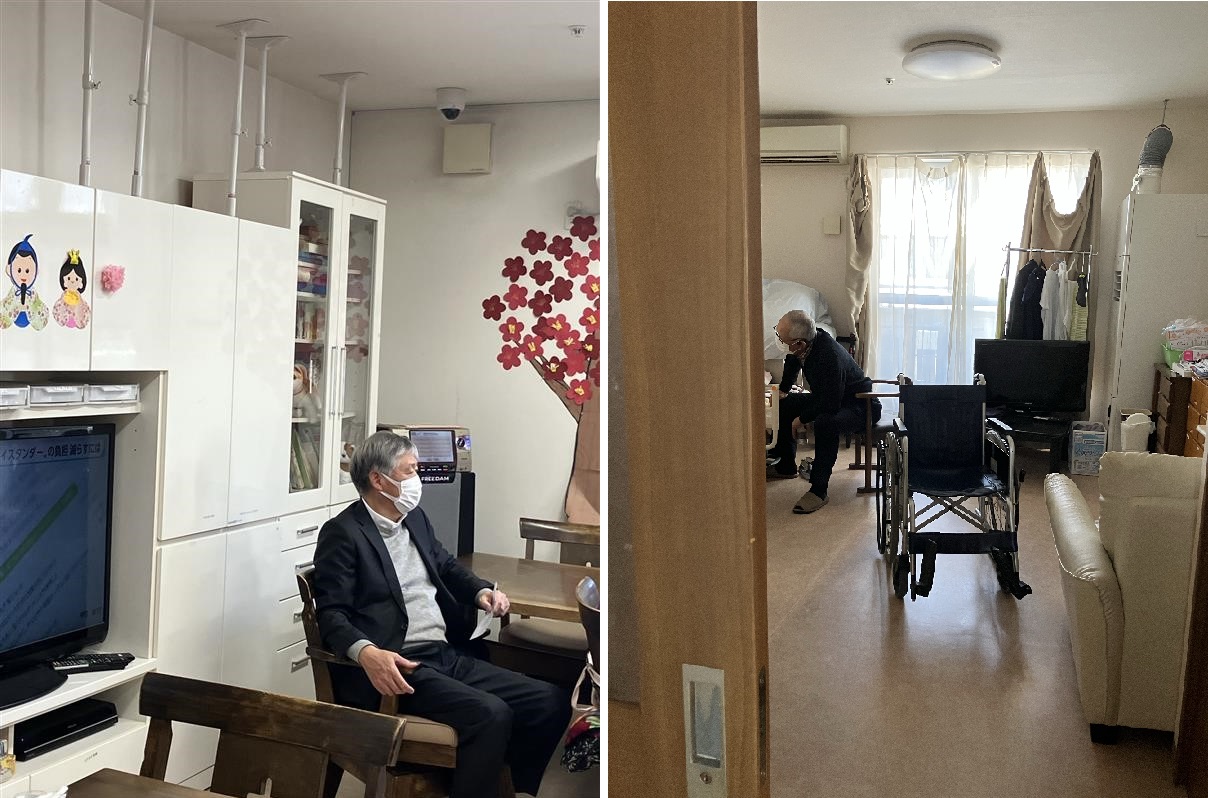
Dialogue with institutional investors
- In FY2024, we also conducted one-on-one dialogues with institutional investors to have deeper discussions aimed at enhancing our management oversight function. We used a web conferencing system to share information and exchange opinions with 11 companies (8 domestic, 3 overseas), mainly financial analysts and fund managers.
- We were able to have in-depth exchanges of opinions on management issues and the expectations of institutional investors for outside directors. The feedback and knowledge gained from these dialogues are utilized in discussions at meetings of the Board of Directors and in improving our management oversight function.
Dialogue with employees
- We visited the Kashima Plant, EDCS. We received an overview of the Kashima Plant, and an explanation of research and development activities related to active pharmaceutical ingredients (APIs), initiatives and issues related to stable API supply for commercial production, and quality control efforts focused on data digitization and test automation. Following a Q&A session, we toured the plant and deepened our understanding of this API base with both R&D and commercial production functions.
- We visited Tsukuba Research Laboratories. We received explanations on the history of new drug discovery, the R&D framework, and the concept of the grand design of Tsukuba Research Laboratories. We also learned about the open facility layout designed for fluid movement and the expectations for value creation through new styles of communication. We received briefings from leaders responsible for executing drug discovery activities—from hypothesis building to approval—on current projects, strategies, and issues of each research function. We deepened our understanding of drug discovery research activities and the organizational structure. During interaction with young leaders, opinions were shared on the current situation and perceived issues. Each director offered comments on their expectations for the organization and employees, as well as advice based on their experiences. A lively discussion took place, followed by a lab tour.
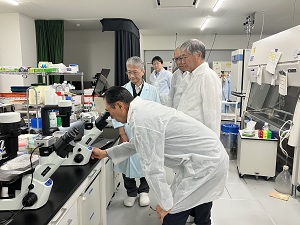
- We visited the Kawashima Industrial Park. We received an overview of the Kawashima Industrial Park, commercial production, and formulation research activities. As part of the activity briefing, we were given explanations on quality control issues and future prospects for ensuring the global stable supply of LEQEMBI, as well as on the development of the autoinjector formulation of lecanemab. This was followed by a Q&A session and exchange of opinions. We then toured the formulation and packaging processes. We also visited the newest injection formulation building and research building, Eisai Medicine Innovation Technology Solutions (EMITS), and the Naito Museum of Pharmaceutical Science and Industry. We deepened our understanding of the Company’s production system and formulation research.
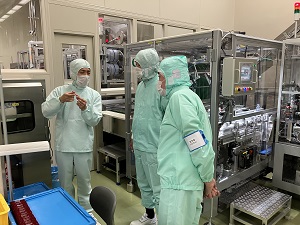
- Following our visit to the Tokyo Communication Office (CO) in FY2023, we visited the Omiya CO, which covers all of Saitama Prefecture. We received explanations on the treatment process for LEQEMBI, the status and issues of information provision activities, and the overall situation in Saitama Prefecture. We were also briefed on strategic planning tailored to regional characteristics for further contribution to patients through LEQEMBI, efforts to establish a pathway from diagnosis to treatment, and regional issues and activities aimed at overcoming them. Through Q&A and exchange of opinions, we deepened our understanding of Eisai Japan's MR activities.
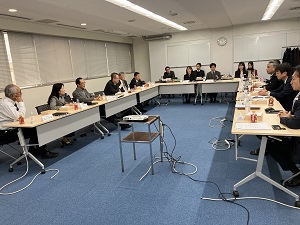
The CEO succession plan
Selection of a CEO is a resolution item for the Board of Directors. To ensure the fairness, appropriateness, and smoothness of resolutions at Board of Directors meetings, the Company continues to discuss CEO succession plans within the hhc Governance Committee, which is composed of 7 outside directors.
View Regarding Selection of the Chief Executive Officer (CEO)
The Company considers the selection of the Chief Executive Officer (CEO) to be one of the most important decisions to be made by the Board of Directors. In particular, independent outside directors play a crucial role in appropriately exercising oversight over the succession plan formulated by the CEO. They also provide advice and guidance in nurturing potential future CEOs, thus enhancing the objectivity of CEO candidate proposals by the CEO himself and ensuring the fairness of CEO selection resolutions in Board of Directors meetings in a reasonable manner.
-
Procedures Regarding CEO Selection
The Company has established rules, including procedures, for sharing information between the CEO and directors regarding the succession plan formulated by the CEO and for preparing for unforeseen events. The outline of the procedures is as follows.
- 1)Sharing of Information about the Succession Plan
- - Information about the succession plan proposed by the CEO is shared in meetings of the hhc Governance Committee twice each year.
- The CEO and inside directors also participate in the hhc Governance Committee, and information on the succession plan is shared among all directors.
- 2)Discussion on the Succession Plan
- - Criteria for evaluating candidates are expected to change in accordance with the business environment and other factors. For this reason, criteria will be set appropriately when the CEO proposes candidates.
- - The CEO evaluates candidates on the criteria that have been set, and presents evaluation results in the succession plan.
- - Directors provide advice on the succession plan. The CEO considers the advice provided by directors, and reflects it in the succession plan as appropriate.
Preparations for Unexpected Situations
Situations, such as unforeseen accidents, that necessitate the sudden selection of a new CEO by the Board of Directors are also possible. Contingency plans for such unexpected situations are also confirmed when considering the aforementioned succession plan.
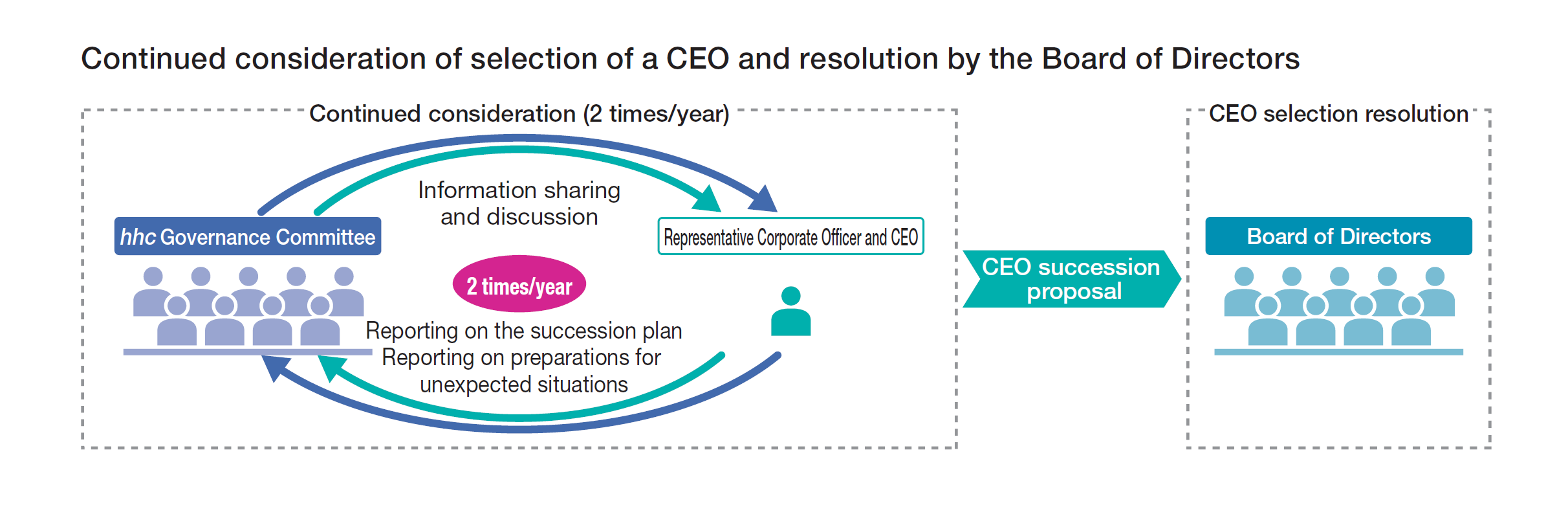
Message from the Chair of the Board of Directors on the Implementation of the Succession Plan
1. History of the Consideration of the Succession Plan
After the transition to a company with a nomination committee, etc., system in 2004, the succession plan was set as one of the annual performance goals of the CEO, and all directors shared information about the goal. In addition, detailed reports were provided by the CEO to the outside directors meetings (currently called the hhc Governance Committee) from time to time as requested by the outside directors. Subsequently, in 2017, rules for the implementation of the succession plan were compiled under the lead of the then Chair of the Board of Directors (outside director), and based on these rules, information sharing and discussions on the succession plan are held twice a year on an ongoing basis.
In addition, the Company continues to consciously expand opportunities for contact and dialogue among candidates and directors, as well as conduct interviews and discussions regarding objective evaluations of candidates by third parties outside the Company.
2. Current Status of Information Sharing and Discussions on the Succession Plan
The hhc Governance Committee is presented with a detailed report on an ongoing basis from the CEO, describing the overall status of the Company’s management, the status and evaluation of candidates for the next CEO (multifaceted evaluation with multiple evaluation items), and the story toward succession. Since the current CEO has led the entire company as the top executive for more than 30 years, the directors expect the CEO not only to develop candidates, but also to make suggestions on the ideal management structure under the new CEO, and discussions are underway.
In addition, the Board is also taking steps to provide directors with direct access to information on candidates by increasing contact with candidates at various venues, including Board of Directors meetings, hhc Governance Committee meetings, and training sessions, as well as observing executive meetings. Through these efforts, the Board also provides advice and requests to the CEO regarding the development of candidates.
3. The Role of Outside Directors
I understand that the CEO Succession Plan is an important issue with a significant impact on the Company’s corporate value, that it is highly confidential and sensitive, and that fairness is required in its determination. In particular, as all of the Company’s outside directors are independent outside directors, their strong involvement in the process of the succession plan developed by the CEO will reasonably ensure the fairness of the CEO selection process to be resolved by the Board in the future. Therefore, I am aware that each and every one of the outside directors must meet the expectations of the Company’s stakeholders by providing candid opinions and advice with a view to the further growth of the Company.
Chair of the Board of Directors
Fumihiko Ike
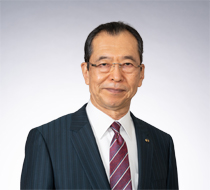
Implementation of Corporate Governance Evaluation
The effectiveness of the Board of Directors’ management oversight function is evaluated each year by the hhc Governance Committee. If any issues related to the operation of the Board of Directors, etc., are identified, a request and proposal for improvement are submitted to the Board of Directors and operational divisions. In the corporate governance evaluation, the status of the activities of the Board of Directors and other management councils is inspected and evaluated based on the recognition of issues in the previous fiscal year, issues are identified for the next fiscal year, and improvement measures are presented, thereby implementing the Plan-Do-Check-Act (PDCA) cycle.
In FY2017, it was decided that an outside organization would conduct an inspection and review of the processes and evaluation results once every 3 years to ensure the appropriateness of corporate governance evaluation in a continuous and stable manner.
FY2024 Corporate Governance Evaluation
On April 23, 2025, the Board of Directors discussed the results of the Self-review of the Corporate Governance Principles, Self-review of Internal Control Regulations, and the hhc Governance Committee-compiled Board of Directors evaluation, and passed resolution on the FY2024 Corporate Governance Evaluation as follows.
* For the Rules Concerning Items Necessary for the Execution of Duties by the Audit Committee and Rules for Preparing Necessary Systems for Ensuring Suitability of the Execution of Duties by Corporate Officers.
Corporate Governance Evaluation System focusing on improving the effectiveness of the Board of Directors
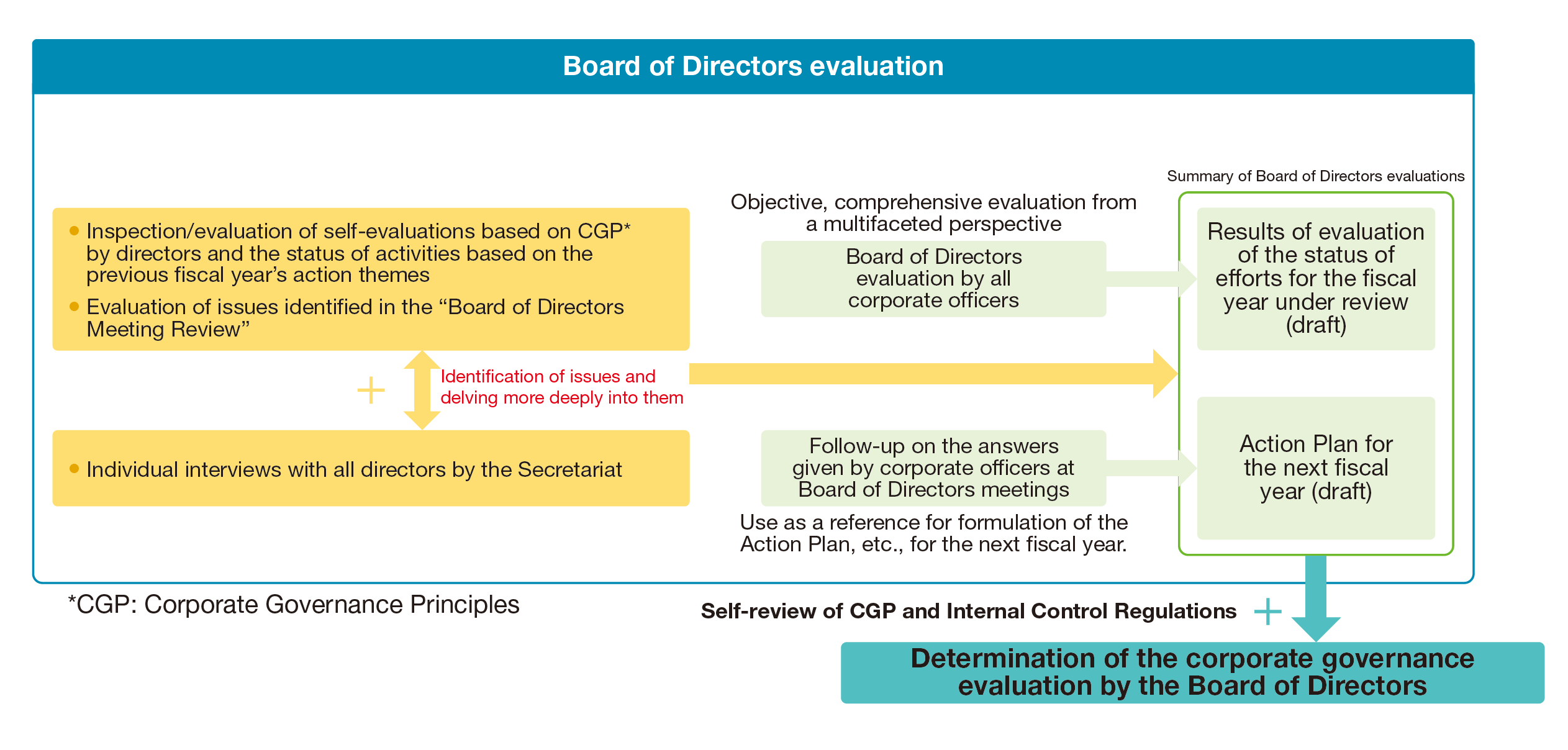
Mechanism for Utilizing Outside Organizations to Improve and Ensure Suitability of the Board of Directors Evaluation
- 1. The Company has implemented a mechanism in which an outside organization examines the evaluation process, evaluates it, proposes improvements, and inspects the evaluation results, etc., once every 3 years, with the aim of ensuring the suitability of the Board of Directors evaluation and improving the evaluation.
- 2. After analyzing the Company’s past evaluation methods, evaluation decision process, evaluations of each director, and final evaluation, etc., the outside organization points out issues and makes recommendations regarding the systems and their operation.
- 3. Based on the recommendations and what was pointed out by the outside organization, the hhc Governance Committee and Board of Directors will improve the systems and their operations.
- 4. The outside organization inspects the evaluation process, evaluation results, and other aspects of the Board of Directors evaluation compiled by the hhc Governance Committee, and submits a report to the Board of Directors.
- 5. The Board of Directors decides the corporate governance evaluation for the applicable fiscal year based on the evaluation compiled by the hhc Governance Committee and the report by the outside organization.
* The next review by an outside organization is scheduled to be conducted in FY2026.
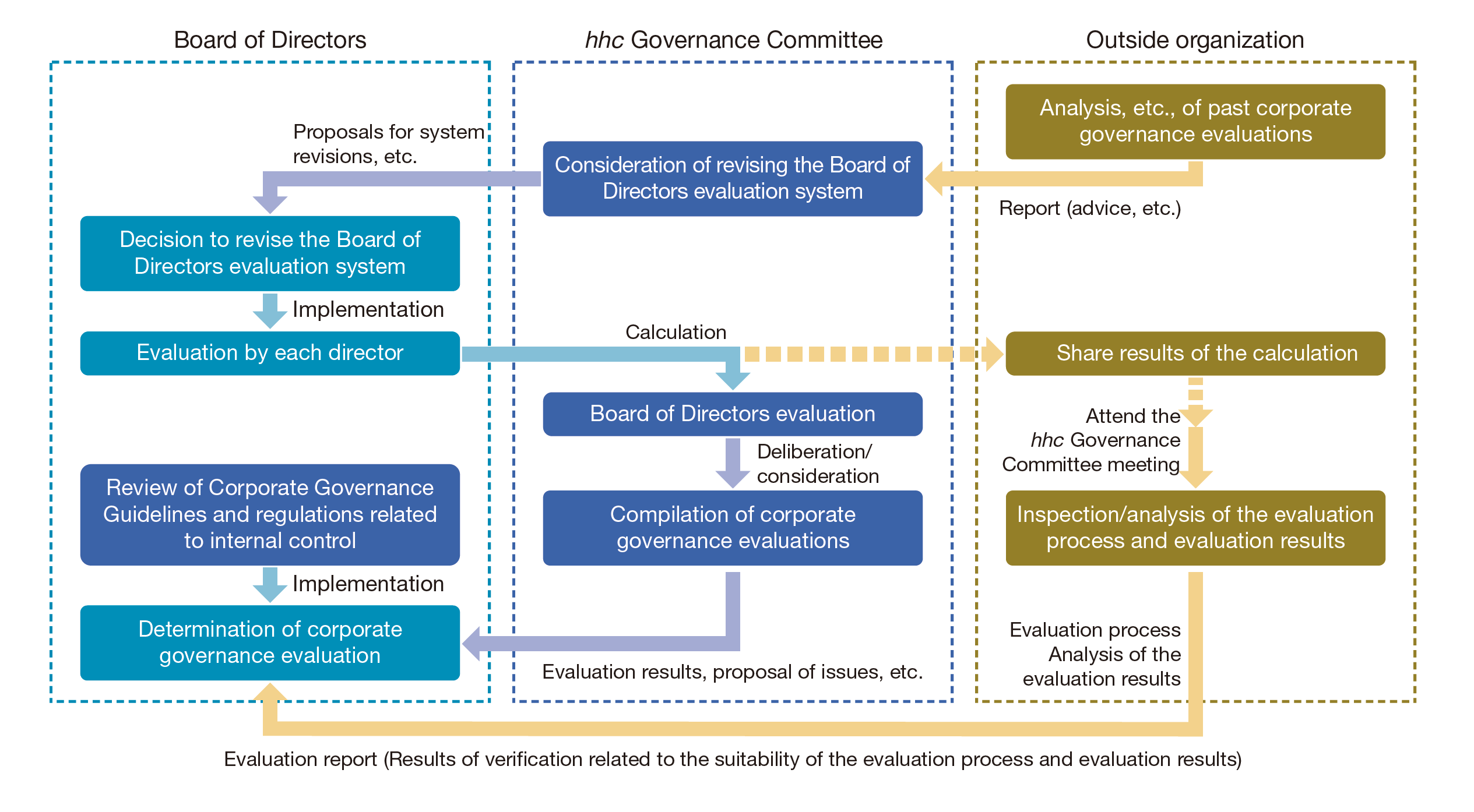
FY2024 Corporate Governance Evaluation Results
In regard to the Corporate Governance Principles and Internal Control Regulations, no evidence was found of any operation, etc., that deviates from the rules. It was confirmed that the directors and corporate officers, etc., are executing their duties appropriately to improve corporate governance.
With respect to the Board of Directors evaluation, the state of response in FY2024 to the issues identified in the FY2023 Board of Directors evaluation as issues for FY2024 was checked and evaluated, and the issues, etc., for the next fiscal year were recognized.
For details, please refer to pages 102 to 104 of the Notice of Convocation of the 113th Ordinary General Meeting of Shareholders.
Execution of Various Training Sessions, etc.
In order to deepen the understanding of the Company’s business activities and business environment further, enhance deliberations by the Board of Directors, and fully utilize the oversight function, outside directors plan and carry out various training sessions as well as opportunities to interact with operational divisions (corporate officers, employees, etc.).
Training Sessions for Outside Directors
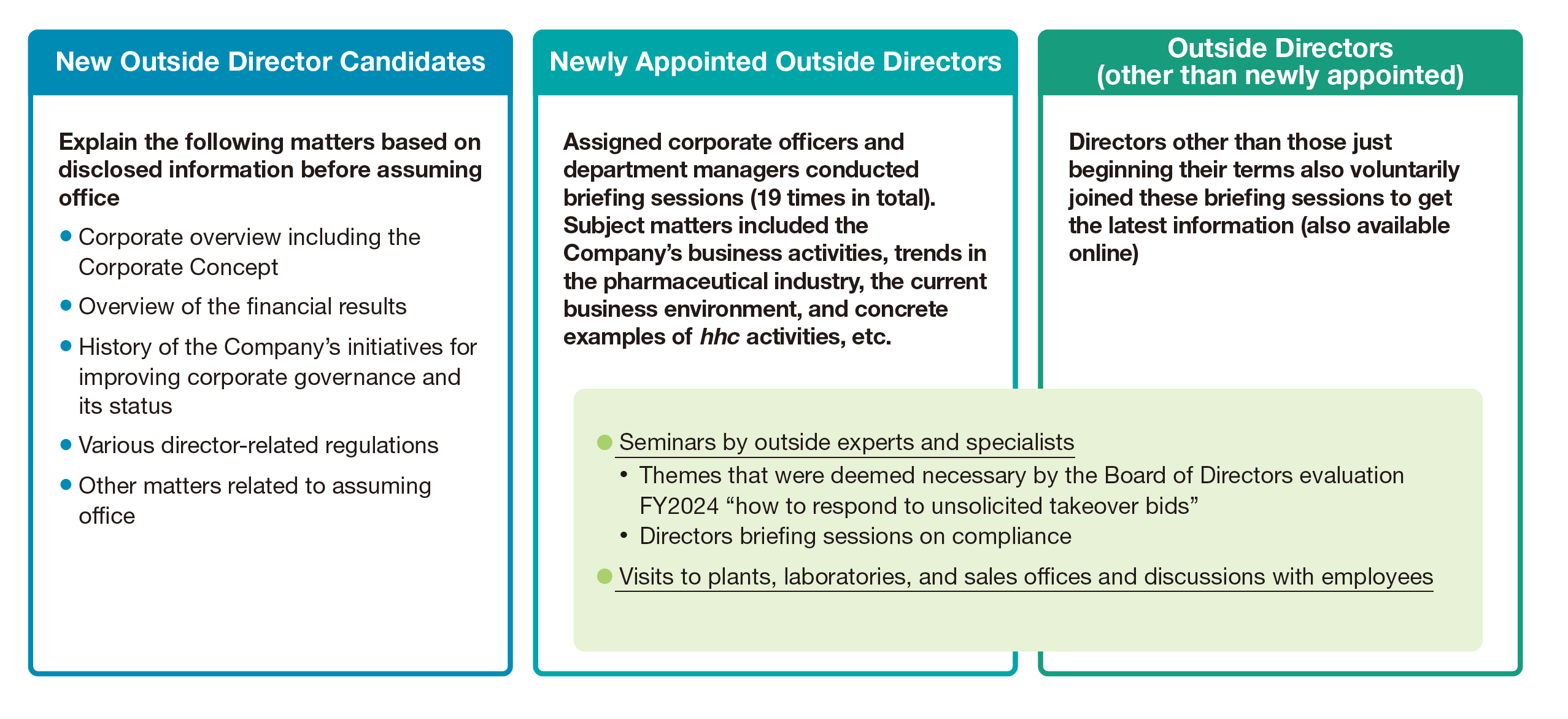
Communication with Corporate Officers
- Training for newly appointed outside directors was based on face-to-face briefings, with corporate officers providing individual explanations of their areas of responsibility and sharing information on the Company’s business contents and activities. Lively discussions were also held.
- In addition to the face-to-face briefings, these training sessions also utilized web conferences. Outside directors other than newly appointed directors also participated on a voluntary basis. In addition, by filming the corporate officers’ briefings and Q&A sessions, we have made the sessions available for on-demand viewing by directors
